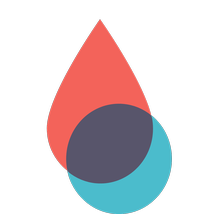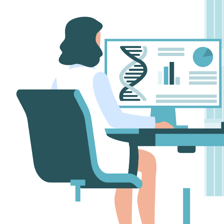Genetic and congenital disorders samples and experimental services
What are genetic disorders?
Genetic disorders are caused by abnormalities in an individual's genes or chromosomes. These abnormalities can be inherited from one or both parents or can arise spontaneously. Genetic disorders can be inherited in several ways, including autosomal dominant, autosomal recessive, and X-linked inheritance. Some examples of genetic disorders include cystic fibrosis, sickle cell anemia, and Huntington's disease. It is also estimated that 80% of rare diseases have genetic origins.
What are congenital disorders?
Congenital disorders are present at birth and can be caused by a variety of factors, including genetic mutations, environmental factors, and problems with fetal development. Congenital disorders can affect various parts of the body, including the heart, brain, spine, and limbs. Some examples of congenital disorders include congenital heart defects, spina bifida, and Down syndrome.
While some genetic and congenital disorders can cause significant health problems and disabilities, many can be managed with appropriate medical care and support. Genetic counseling can also be helpful for individuals and families affected by these conditions, as it can provide information about the risks of passing on genetic disorders to future generations and options for testing and treatment.
What types of samples are used in blood disorder research?
The types of samples used in genetic and congenital disorders research depend on the specific disorder and the type of analysis being performed. Here are a few examples:
Blood samples
Blood samples are commonly used to extract DNA for genetic testing, including gene sequencing, genotyping, and chromosomal analysis.
Tissue samples
Tissue samples from affected organs or tissues may be used to investigate the underlying causes of a congenital disorder, such as abnormal cell growth or function.
Amniotic fluid
Amniotic fluid, which surrounds the developing fetus in the womb, can be collected through amniocentesis and analyzed for genetic abnormalities or chromosomal disorders.
Cord blood
Blood collected from the umbilical cord after birth may be used for genetic testing in newborns.
Saliva samples
Saliva samples may be used for genetic testing, particularly for disorders that can be traced to specific mutations in genes.
Overall, the choice of sample depends on the specific disorder being investigated and the type of analysis being performed.

Available types of biological samples available for genetic disorders
- Tissues
- Fresh tissues
- Frozen tissues (OCT and FF)
- FFPE tissues
- Healthy tissues
- Blood derivatives
- Whole blood
- PBMC
- Plasma
- Serum
- Leukapheresis
- Biofluids
- Urine
- Stool/Feces
- Saliva
- Mucosal swabs
Types of Collections
- Retrospective: we can look into existing biobank collections
- Prospective: we can set up clinical collection specific to a given project
Experimental models used in congenital and genetic disorder R&D
A variety of experimental models are used in genetic and congenital disorders research to investigate the underlying mechanisms of these conditions and develop new treatments. Here are a few examples:
Animal models: in vivo models, such as mice and zebrafish, are commonly used in genetic and congenital disorders research. These models can be used to study the effects of genetic mutations or environmental factors on development and disease progression. They can also be used to test new treatments and therapies.
Cell culture models: in vitro models, such as induced pluripotent stem cells (iPSCs) derived from patient samples, can be used to study the effects of genetic mutations or environmental factors on specific cell types.
Organoids models: Organoids are three-dimensional structures that mimic the structure and function of organs in the body. Organoid models can be used to study the effects of genetic mutations or environmental factors on specific organs or tissues, such as the brain or the liver.
Gene editing models: Gene editing technologies, such as CRISPR/Cas9, can be used to create genetic mutations in cells or animals to study the effects of these mutations on development and disease progression.
Overall, the choice of experimental model depends on the specific disorder being investigated and the type of research being conducted. The use of these models can help researchers better understand the underlying mechanisms of genetic and congenital disorders and develop new treatments and therapies.

Typical deliverables
- Feasibility of availability of samples or experimental services
- Regulatory aspects (transfer authorizations, export authorizations, ethics committee agreement)
- Contracting
- Samples shipment in appropriate conditions
- Clinical data or results
- Other services (i.e. Nucleic acid extraction, quality control)

Get started with your genetic disorders research request
Please answer the fields below to be contacted by our team of scientists
Our team will handle your endocrine disorders R&D procurement from the beginning to the end
Perform a feasibility study by looking for existing samples already in collections & ready to be transferred
Set up a clinical biological collection and preparing contracts with sources
Assist the material transfer from the source to the lab, including treatments, QA or shipping, as needed